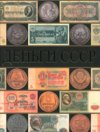
-
 Francúzsky jazyk
Francúzsky jazyk
Les terres cuites architecturales des églises du haut Moyen Age dans le nord-ouest de la France et le sud-est de l'Angleterre
Autor: Sophie Blain
Until the 1960s, early medieval religious architecture suffered from a general lack of interest by the field of archaeology resulting in a real need for the improvement in knowledge of this often-misinterpreted art. Initially considered as outmoded or backward,... Viac o knihe
Na objednávku
112.50 €
bežná cena: 125.00 €
O knihe
Until the 1960s, early medieval religious architecture suffered from a general lack of interest by the field of archaeology resulting in a real need for the improvement in knowledge of this often-misinterpreted art. Initially considered as outmoded or backward, early medieval architecture is actually dynamic, particularly the transition period between the 9th and the 11th centuries marked by its themes of transference and novelty. One of the features of this architecture is the use of ceramic building materials in the masonry, a technique from the Antiquity that can be observed continuing into the 11th and 12th centuries. This architectural characteristic is visible in areas touched by Roman traditions and particularly in north-western France and south-eastern England, which also benefit from a substantial concentration of early medieval buildings. One of the aims of this work is, therefore, to identify similar architectural tendencies and examine the technological choices made in the construction of the buildings under analysis. In order to achieve this, it is necessary to accurately position key-buildings in the architectural chronology. Amongst methods for this, luminescence dating applied to ceramic building materials is particularly attractive. Not only does it contribute to building archaeology through more precise dating, but its use in this specific aim also presents an opportunity to thoroughly test the method and essentially improve its potential. The first part of the study examines aspects of the political and religious contexts of the period between the 9th and the 11th century, as well as the associated architecture and its components. The second part is devoted to the presentation and the definition of the luminescence dating method. Bringing together these elements enables the twelve case studies from French and English sites selected for this chronology research work to be addressed in detail. Finally, a detailed study of the mode of use of ceramic building materials is presented and an interpretation of this architectural choice will be attempted.
- Vydavateľstvo: British Archaeological Reports Oxford Ltd
- Rok vydania: 2011
- Formát: Paperback
- Rozmer: 297 x 210 mm
- Jazyk: Francúzsky jazyk
- ISBN: 9781407307442

 Anglický jazyk
Anglický jazyk 




 Ruský jazyk
Ruský jazyk 





